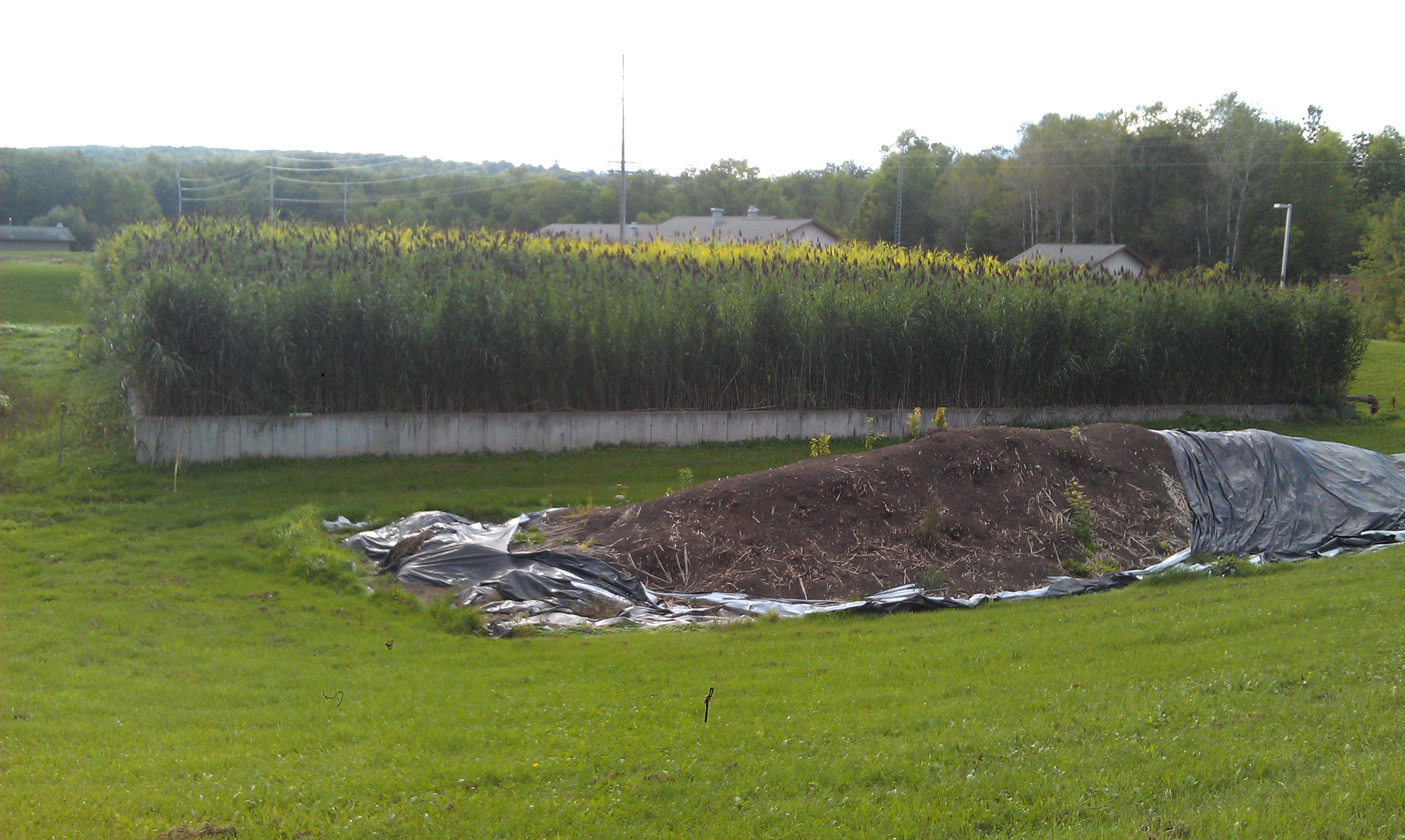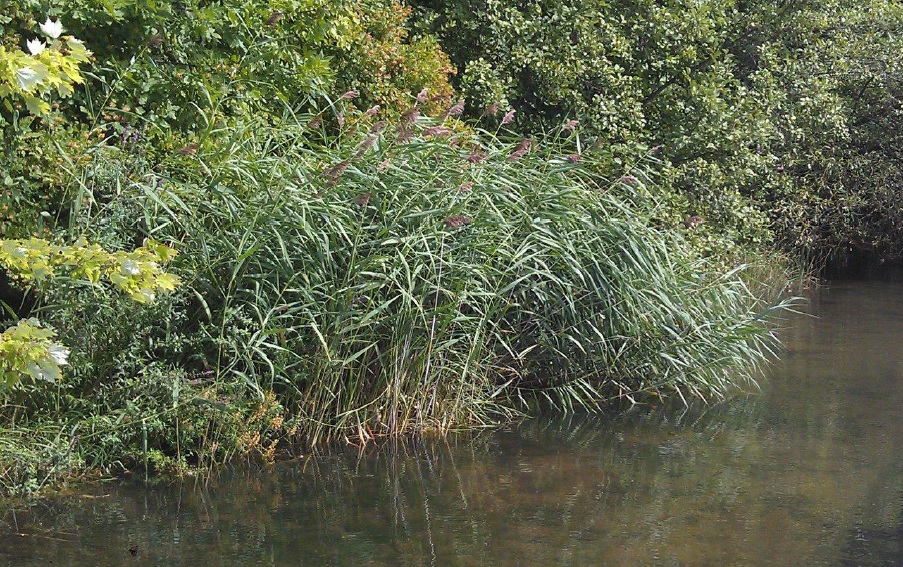Stacy Schumacher, Wisconsin Department of Natural Resources
June, 2014
In Wisconsin, the Department of Natural Resources (DNR) is working with a range of partner organizations and communities to revise guidance on the use of Phragmites reed beds to dewater treated sewage sludge, also called biosolids, in wastewater treatment facilities.
This method of treating biosolids involves planting Phragmites into concrete and earthen lined beds and allowing the high rate of evapotranspiration associated with these plants to dewater the sewage sludge. Typically, Phragmites beds take 8-12 years with intermittent loading before the beds need to be emptied and reused. The highly dewatered biosolids are then removed and either landfilled, or land applied, to reuse the nutrients in the sludge.
Wisconsin’s guidance is being revised to help address the use of non-native Phragmites and the potential invasive issues that may arise from their use. The current method is used in at least 24 states, many in the northeast, although due to the potential impacts from the use of non-native plants, some states have already placed restrictions on the use of this method, or required the use of native Phragmites in new construction.

Example of a Phragmites reed bed system. Some excavated reed bed dewatered sludge material is located in the foreground (image courtesy Miles Falck, Great Lakes Indian Fish and Wildlife Commission).
Why the change?
The DNR’s existing guidance was finalized in 2001, and although it refers to the perception that Phragmites can behave invasively in some areas, it was written before confirmation of a non-native species of Phragmites in the US (Saltonstall, 2002), which has shown to be much more invasive than the native species. Prior guidance also followed the assumption that rhizomes and stolons – the roots and runners of the plants– or plant fragments, were the main risk for the spread of the plants into wetlands or surrounding habitats. More recent research has shown that, for non-native Phragmites, the seeds are more capable of germinating and starting new populations than was assumed (Brisson et.al. 2010, Kettenring & Mock, 2012).
In addition, recently several areas in northern Wisconsin experienced an invasion of non-native Phragmites. These invasions are near wastewater treatment plants using this reed bed dewatering process. This is a part of the state where non-native Phragmites is uncommon, but native Phragmites is abundant. With the assistance of local organizations, the Northwoods Cooperative Weed Management Area (NCWMA) and Great Lakes Indian Fish and Wildlife Commission (GLIFWC), surveys were completed in the invasion areas to map both native and non-native Phragmites and control all non-native populations.
In early 2014, DNR staff met with wastewater treatment facility operators and other stakeholders to present information to the particular wastewater treatment plants using Phragmites dewatering. A range of topics were discussed. Many facility operators possess useful knowledge and experience of working with the reeds and sludge. Staff with the DNR will continue to partner with these operators as the agency develops the new guidance.

Newly establishing area of non-native phragmites, approximately 200 meters from reed bed system (image courtesy Miles Falck, Great Lakes Indian Fish and Wildlife Commission).
What kinds of changes will occur?
The changes that the DNR will make to existing guidance on the use of sludge reed beds will take into account newer non-native Phragmites species research, and include best management practices and strategies to reduce the risk of this invasive plant spreading outside of the wastewater treatment facilities where they are currently being used.
These changes will consist of the following four actions.
- New monitoring protocols will include seed considerations such as seed dispersal, seed travel distances and high risk areas to consider for potential Phragmites invasions.
- Guidance will include suggested control methods of any observed escaped populations.
- Sludge disposal guidance will provide best management practices for wastewater treatment plant operators focusing on rhizomes and potential seed banks.
- Suggested actions to prevent the plant from producing seed will also be developed including best time of year to cut or harvest the reeds, and best disposal practices for reed materials.
While these changes to the guidance near completion, there may be more changes coming and still much work to be done to examine ways of preventing existing non-native plants within the reed bed system from producing viable seed, or potentially, changing existing reed bed systems from non-native to native Phragmites.
Actions developed as part of this revised guidance will be referenced in future or reissued discharge permits for reed beds. It is likely that new reed beds permitted in the state will be required to use native Phragmites rhizomes.
Any group or individual that would like to share information or has questions is encouraged to contact Stacy Schumacher at the Wisconsin DNR at stacy.schumacher@wi.gov
